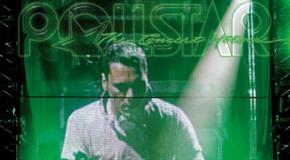Features
One From The Vault: Tiësto
International dance maestro Tiësto is determined to change that image forever.
“I’ve been playing in the clubs for years,” Tiësto told Pollstar. “I thought it was time to try to see how far we can go to push the boundaries.”
Los Angeles Memorial Sports Arena’s Todd DeStefano, who brought Tiësto to the arena in 2005 and is bringing him back again this summer, said although the venue has hosted DJ shows in the past, Tiësto is different.
“We’ve done these style shows with DJs – Paul Van Dyk, Paul Oakenfold – every New Year’s Eve and Halloween for the last 10 years,” DeStefano told Pollstar. “So I’ve seen the type of numbers that these artists can bring in over the years.
“Tiësto was something special, because it was a concert. It was a full-on performance, and it was an unbelievable spectacle.”

Tiësto’s Elements of Life world tour, which at press time included a record 19 U.S. arena dates, was two years in the making. The tour requires five trucks to carry equipment and a full-time staff of 35 to keep things humming. The show features three vocalists (Christian Burns, Judy Thompson and Maxi Jazz), fellow DJ Brian Transeau, and an appearance by the Blue Man Group, which collaborated with Tiësto on a song.
The Dutch-born DJ, whose given name is Tijs Verwest, didn’t start out playing to thousands of people in arenas around the globe. In fact, his career began in the ’80s the way it does for most DJs – with a love of music.
At first he made tapes for friends, which led to playing at parties, then to a mobile show that traveled around Holland and then to spinning in a club. Eventually he began creating original music and founded a pair of record labels to release his work.
Throughout the ’90s, his acclaim continued to grow, and he found himself performing at international events with some of the biggest names on the dance music scene.
The idea of doing solo shows came to him after a big party in Holland, when he discovered that most of the 30,000 people there had come to hear one DJ – him.
“I decided, ‘OK if they all came just for me, why should I just play two hours? Why not the whole night?’” Tiësto said.
So he started going out alone, playing longer and more elaborate sets that included not just the requisite light show but original video content, dancers and live vocalists. As his act grew, it became apparent it was time to leave the club.
Paul Morris, Tiësto’s agent at AM Only, was introduced to him by Little Big Man’s Marty Diamond. He said Tiësto’s move into arenas was not only logical, it was necessary.
“It was just a natural progression,” he told Pollstar. “Turnouts were getting larger and we were running into capacity issues. Also, with his production values constantly increasing, it has been difficult to contain that in most club venues.”
In 2003, Tiësto shattered a longstanding barrier when he became the first DJ to hold a solo concert in a stadium, playing to a crowd of more than 25,000 at the Gelredome in The Netherlands.
He topped that feat by performing in front of more than 100,000 people at the opening ceremony of the 2004 Athens Olympics. And, in 2005, he launched the first full-scale concert tour of arenas by a DJ.

Prime Time Management’s Wilfried Dam, a friend of Tiësto’s for the past 20 years, said there are some challenges in booking a DJ into arenas, but it’s worth the trouble.
“The big difference is that traditional artists are there for many decades, where a DJ doing big arena shows is a new phenomena,” Dam told Pollstar.
“On the other hand, it is an advantage because he can define his own standards since it’s new and fresh. It’s like being the first man on Mars – no one has ever been there.”
Having conquered the rest of the world, Tiësto now has his sights set on the States. He recently wowed the crowd at the Coachella Valley Music & Arts Festival, where he performed on the main stage at the behest of Goldenvoice’s Paul Tollett.
“I think the whole festival was there, because I played after Red Hot Chili Peppers,” Tiësto said. “There was already a good start … and the last half hour of my set, all the other tents were closed.”
So does all of this mean we can look forward to a wave of arena shows by DJs in the States? Morris, who represents a number of other big DJs like Carl Cox and Ferry Corsten, said it depends.
“Not all DJs necessarily make sense in that environment,” he said. “Some DJs prefer not to be front and center and feel more comfortable in a traditional DJ booth.
“If the numbers warrant it, there are some artists for whom it would probably make sense to step into arenas.”
As for what the future holds for Tiësto, he said he’s gotten a lot of requests to remix and produce for other artists and wants to sharpen his skills in that area. But he also said his first love will always be live DJ’ing, and he has a few ideas about where to take it next.
“I’ve got a couple of cards left,” he said. “The bigger, the better.”